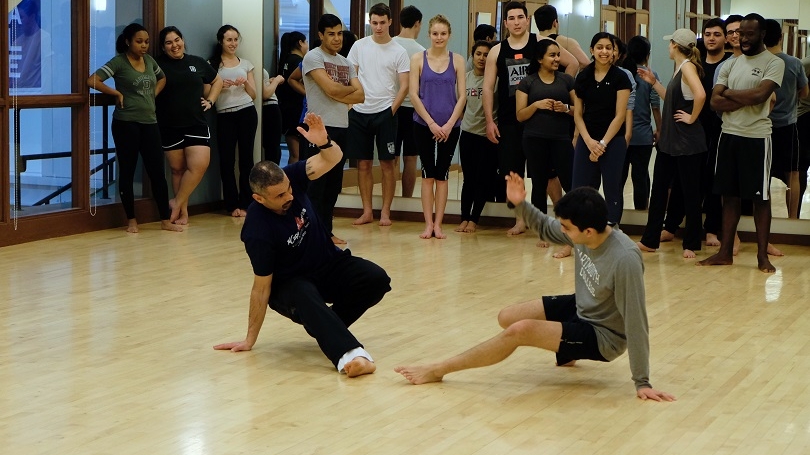
- Public Policy
- Leadership
- Funding
- News & Events
- About the Center
Back to Top Nav
Back to Top Nav
Back to Top Nav
Back to Top Nav
On February 1, 2016, Mestre Marquinho Coreba, professional Capoeirista and teacher at Capoeira Gerais Boston, facilitated a RGLP session in which students were introduced to capoeira, a Brazilian martial art.
During the Portuguese colonial period of the 16th century, African slaves invented capoeira as a way to camouflage the practice of martial arts in the form of dance in the hopes of rebelling against slaveholders. Capoeira developed into a combination of fighting, dance, music and acrobatics and represented not only a method of covertly practicing martial arts, but also a method of passing on culture and resisting oppression. Over the past few centuries to the modern day, Capoeira has evolved from a prohibited, marginalized mode of expression to an integral part of Brazilian culture.
Because I had never done capoeira before, the activities of the entire session were new to me. However, it was very fun to dive in and experience firsthand how the moves we learned, from the basic ginga to the aú cartwheel, correlated directly with the rich history and cultural traditions Brazil.
The emphasis on how history shaped our modern day traditions really resonated with me. Because I am a Kathak dancer, this session prompted me to reflect on how Kathak, an Indian classical dance, has evolved over the centuries. Though Kathak flourished until the 1800s, the advent of the British Raj sent the art form into sharp decline until it was revived after Independence and experienced a renaissance of sorts. Like the reemergence of capoeira, the revival of Kathak represented a way to transmit music, dance, and culture.
Overall, I came away from the session with a deeper appreciation for art forms from different countries around the world and how they influence and are influenced by the surrounding cultures throughout history.
Submitted by Meghana Mishra '17, RGLP Participant.